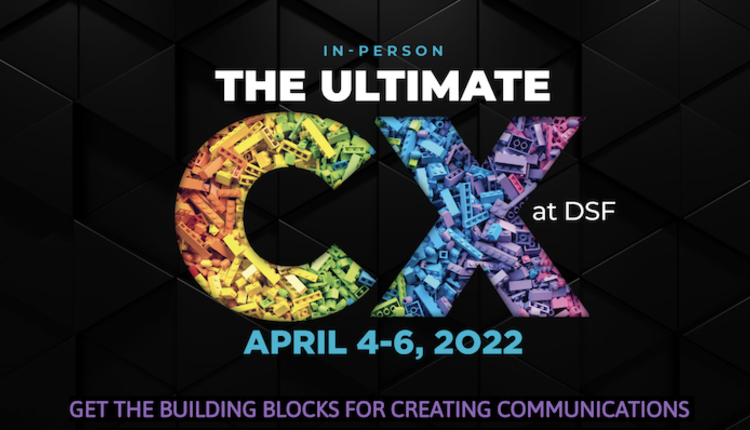
Since 2018, Smart Communications has sought consumers' feedback worldwide to understand their opinions on customer conversations from financial services, insurance and healthcare companies. Of course, this invaluable data shapes how we build out our portfolio of products. More importantly, it gives us crucial insights into our customers and the industries we serve, allowing us to represent these critical stakeholders in our decision-making processes accurately.
This year, we wanted to take stock of how consumers in those industries feel about the technological innovation of the moment: generative AI (GenAI). And with Millennials set to make up 75% of the global workforce by 2025, we wanted to break down how perspectives are shifting. Here are the four most important takeaways from this year’s survey:
1. Transparency and human oversight is crucial for the use of GenAI in customer communications
There’s little doubt of GenAI’s potential benefits to the enterprise, particularly in customer communications. The ability to instantly craft personal yet compliant messages at scale has the potential to revolutionize the industry, saving vast amounts of time and money and freeing up resources to focus on more valuable projects within the organization. The users of Interactive CCM technology will be taking CX to the next level in the near term.
However, it's essential to acknowledge that consumers have strong opinions about using GenAI in the customer communications they receive.
First, they want to know precisely where and when it’s being used, with over three-quarters (77%) saying it’s important that companies explicitly call out when GenAI is used in their communications. Four in five (81%) also expect that a human should always check the content that GenAI models suggest.
Our study also revealed organizations are hesitant to act, as they face ethical and security concerns from two-thirds of consumers over GenAI; 63% and 66% stated these concerns, respectively. Moreover, this consumer base has yet to be convinced that GenAI can improve the communications they are receiving, with less than half (47%) seeing this potential.
This creates a real opportunity for organizations looking to adopt GenAI in their customer communications. A brief disclaimer on a highly personalized, accurate and timely message could reassure the customer that their institution is transparent about GenAI use. It could also show the value the technology brings to their daily interactions with the company.
2. Poor communications risks losing customers
Over the years, our Benchmark Report has found a consistent correlation between customer satisfaction and the quality of customer communications. This year, we saw that the risk of losing those customers due to poor communications is the highest ever. This insight needs to be a part of your 2025 planning process.
Compared to just a year ago, customers are 30% more likely to switch from a company if its communications do not meet expectations (66% in 2024 vs 51% in 2023). As their market share increases, younger generations are proving to be even trickier to hold on to; three-quarters of both Generation Z (74%) and Millennials (75%) say they would make the switch.
Our research also offers answers if organizations need an idea of what makes good customer communications. When we asked consumers what they value most in their communications from institutions, “straightforward and easy to understand” was the top response for 71% of respondents. Accuracy was also highly valued by over half (55%) of consumers, while timeliness came in at a solid third at 38%.
3. Information collection is a crucial piece of the CX puzzle
One of the most important ways customers interact with institutions in finance, healthcare and insurance is through forms, as this is the primary method of data collection they participate in. This year, our research showed that a whopping two-thirds (67%) of customers would end their interaction with a company if that process was more difficult than they expected.
That’s a significant increase over 2023; just over half (53%) agreed with that sentiment. Once again, Millennials and Gen Z were most likely to end their interactions at 72% and 68%, respectively. You probably know exactly where this happens in your organization. Hopefully, these responses will drive you to remove friction from your processes.
When asked what their most important factors of the forms experience were, consumers overwhelmingly ranked security (94%), a fast and easy-to-complete process (91%) and a desire to submit only the most pertinent information (87%) as their top three.
This data proves that every stage of the customer journey is crucial to winning and retaining business. Forms cannot be an afterthought, particularly in highly regulated industries where they are so often relied upon. They should be regarded as having just as much value in the customer experience as their counterparts throughout the funnel.
4. Younger consumers advocate for good communicators
Getting the communications right isn’t enough to prevent customer churn. Good customer communications are a key business driver, with 77% of all respondents saying they would likely recommend a company to a friend if its communications exceeded expectations.
Customer communication strategies have often been more stick than carrot, with organizations motivated to retain customers who might switch away if they’re not satisfied with what they hear and read from their institutions. Our research shows that it could be time to focus on positive motivation, as younger generations are increasingly more likely than their predecessors to advocate for brands that get their communications right.
More than four in five Gen Z (83%) and Millennial (81%) customers said they would recommend their institutions if the communications they receive exceeded expectations. That’s a significant increase over the Silent Generation; only 64% agreed with that sentiment. As Gen Z and Millennials increase their market share, viewing customer communications as a driver of referral business could reap more significant benefits for businesses. If you are not using capabilities, like Editions to support generational, regional, and language preferences to tailor communications, you are missing an opportunity to make deeper connections.
Smart Communications’ research underscores the pivotal role of customer communications in the financial services, insurance, and healthcare sectors. While there are clear advantages to embracing generative AI, organizations must proceed thoughtfully, considering consumer skepticism, ethical implications, and the impact on customer satisfaction.
As younger generations exert a growing influence in the market, the emphasis on clear, precise, and timely communications will only intensify. Companies that prioritize and excel in customer communications stand to retain their customer base and have the potential to attract new business through positive recommendations, particularly from younger consumers.
Scott Draeger joined the customer communication industry by designing statements and marketing materials at an innovative service provider before joining the CCM industry. With over 20 years in CCM innovation, Scott has traveled the world to improve the way insurers, financial services organizations, health insurers, and other heavily regulated industries communicate authentically with their customers while complying with regulations.














